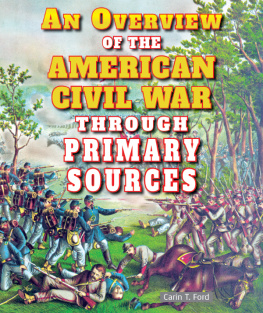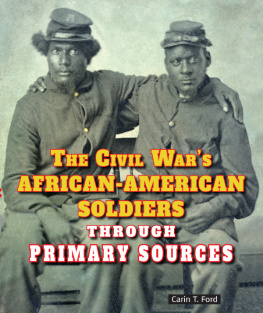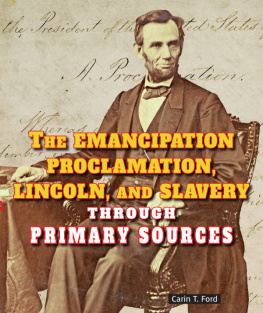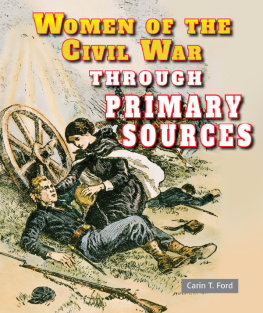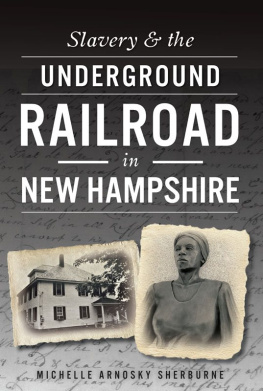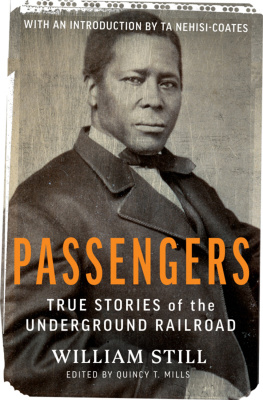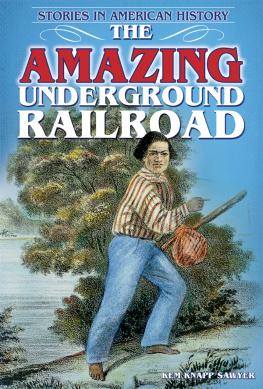Riding the Underground Railroad to Freedom!
In 1619, the first African slaves arrived in America. More than two hundred years later, African-American slaves still suffered under the cruelest conditions in the South. Slaves tried to escape, but it was hard. However, during the mid-1800s, the Underground Railroada secret network of people and escape routesgave many slaves hope. It helped thousands reach freedom. Author Carin T. Ford discusses the tragic story of slavery in American history and the heroes of the Underground Railroad.
About the Author
Carin T. Ford has been writing professionally for more than twenty-five years, including many books for Enslow Publishers, Inc. In addition to writing, she teaches English and journalism at colleges in the Philadelphia area.

Image Credit: Library of Congress Prints and Photographs
In this May 1862 photo, Confederate general Thomas F. Drayton (front left in uniform) stands with his slaves at a plantation in Hilton Head, South Carolina. When the Civil War began in 1861, slavery had existed in the United States for nearly 250 years.
There was so much to be done in the American coloniescities to be built, farmland to be cleared and planted. Who would do it? Many people came from Europe as indentured servants. This means they promised to work for several years in exchange for food and housing. After that time, they would be free. Other people were brought to the colonies in chains. They were forced to work for no pay. They would never earn their freedom. They were slaves.
A boat carrying twenty African slaves landed on the shores of Jamestown, Virginia, in August 1619. One hundred slaves had begun the journey, but eighty of them died along the way.
The voyage across the Atlantic Ocean was terrible. Men, women, and children were packed together below the ships deck. They had little food or water. There was hardly any air to breathe. Sickness spread quickly from one person to another. Of the 15 million African people who were sold into slavery, nearly 4 million died while sailing across the ocean.
The twenty slaves who stepped off the boat in Virginia were the first Africans to arrive in the American colonies. The Dutch trader who had brought them exchanged the slaves for food.
For the next sixty years, only a small number of Africans were brought to America. Indentured servants did most of the work in the colonies. But after a while, landowners felt they could get more for their money by buying slaves.
Most African slaves worked on farms in the American colonies. Especially in the South, crops such as tobacco and rice grew well. Large numbers of workers were needed in the fields to do the planting, plowing, hoeing, and harvesting of the crops.

Image Credit: Library of Congress Prints and Photographs
The conditions aboard slave ships were inhumane. Slaves were packed belowdecks with virtually no food or water, sweltering temperatures, unsanitary conditions, and little air to breathe in the complete darkness. This drawing shows the crowded space where slaves were forcibly kept on a British slave ship in 1788.
Millions of African people died on the trip from Africa to the Americas. Chained together below deck, the slaves were packed in so tightly that they had no room to move. On one ship, the captives were given only a teacup of water every three days. With the temperature often climbing to 120F on these voyages, most slaves died from lack of water. Often, there was so little air that candles would not burn and the people could hardly breathe. So many dead bodies were tossed overboard each day that sharks followed the slave ships across the Atlantic Ocean.
African slaves were cheap in the 1600s, and there seemed to be an endless supply of them. So the slave trade grew. The traders made a good profit. They could buy a slave in Africa for about $25, then sell that slave in the colonies for $150. By 1800, slaves were selling for $500. Fifty years later, the price jumped to $800. As the years passed, close to half a million slaves would end up in the United States.
The slave trade worked well for the traders and the colonists, but it was horrible for the African people. They were bought and sold on the auction block like animals. They were beaten, whipped, and half-starved. Any child born to a slave mother became a slave, too. Families were torn apart. Children were sold away from their parents.
Over time, laws were passed in the colonies making it impossible for any Africanseven those who had come to America as indentured servantsto earn their freedom. They would be property for the rest of their lives.
* By 1750, slavery was legal in all thirteen of the American colonies.
* No legal record has ever been found stating that a white man or woman in America had to spend his or her life as a slave.
* In the U.S. Constitution, each slave counted for only three-fifths of a person.
By the mid-1700s, about one of every five Americans was a slave. Most slaves lived in the South, where they labored on farms and large plantations. Not as many slaves were needed to work in the homes and businesses of the North.
Still, it seemed as if slavery was on its way out. The American Revolution had filled peoples heads with thoughts of freedom and justice. A growing number of people wanted to end slavery. By the 1780s, most Northern states had already done away with it. Also, the fields in the South had been planted so often that the soil was worn out. Farmers could not grow as much, so fewer workers were needed.
Then, in 1793, Eli Whitney invented the cotton gin. This was a machine that removed the seeds from the cotton. With a machineinstead of a persondoing the work, fifty times more cotton could be cleaned every day. Southern farmers could now make a lot of money selling cotton.
Many farmers switched to growing cotton almost overnight. Even if their fields were worn out, they planted rows and rows of cotton. As the cotton industry grew, so did the need for slaves. They no longer picked the seeds from the cotton, but hundreds of slaves were still needed to work on the many cotton plantations in the South.

Image Credit: Library of Congress Prints and Photographs
In this 1862 photo, African-American slaves work in a pile of cotton, preparing it for the cotton gin at Smiths plantation in Port Royal Island, South Carolina.
* Abolish means to end something or get rid of it. People who wanted to put an end to slavery were called abolitionists.
* Even in colonial days, some people spoke out against slavery. Later, in the 1800s, many people became abolitionists.
By 1860, the South was turning out 4 million bales of cotton every year. This was almost two-thirds of all the cotton grown in the world. It was no wonder the South was called King Cotton.
At the time the cotton gin was invented, in 1793, there were 400,000 slaves in the United States. By the time the Civil War broke out, in 1861, there were 4 million slaves. One out of every three people living in the South was a slave.


